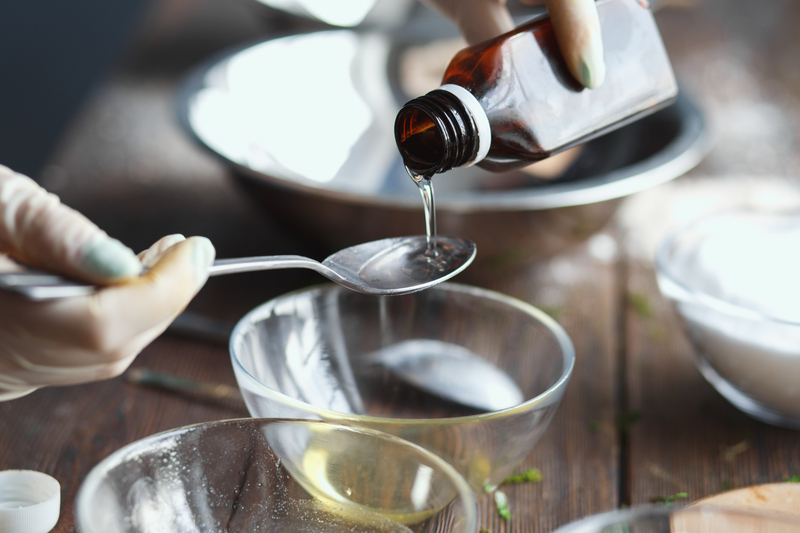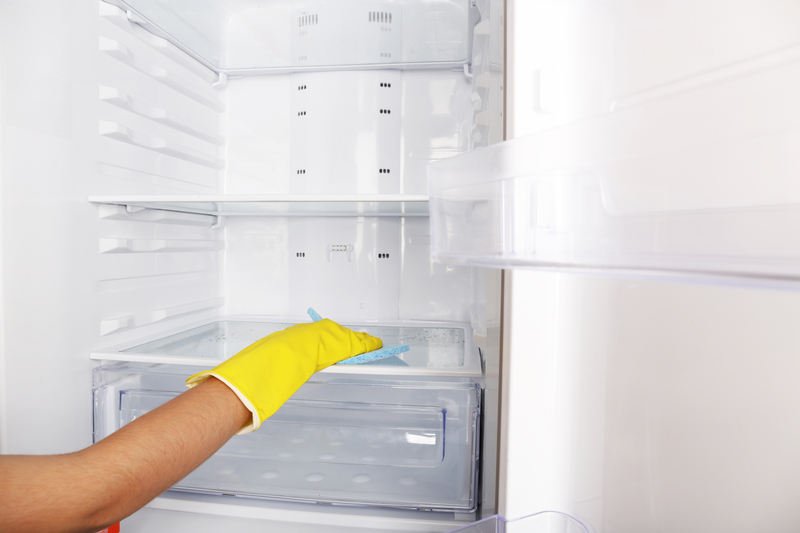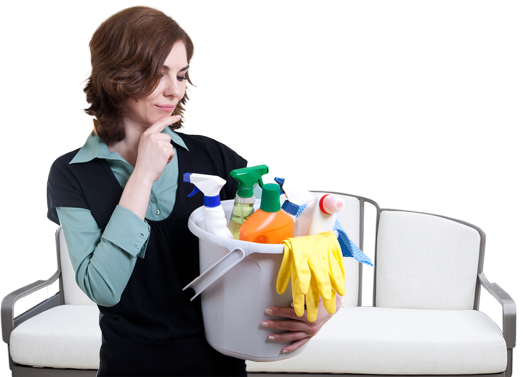Perfect your curtain cleaning skills with these pro tips
Posted on 03/10/2025
Perfect Your Curtain Cleaning Skills with These Pro Tips
Are your curtains looking dull or collecting dust? Mastering curtain cleaning can breathe new life into your home's look, improve air quality, and extend the life of your window treatments. With the right techniques and insider secrets, keeping drapes spotless is easy, efficient, and rewarding. In this comprehensive guide, discover expert curtain cleaning advice, understand deep-cleansing methods, and learn how to maintain freshness every season.

Why Proper Curtain Cleaning Matters
Many overlook curtain maintenance, but clean curtains do more than enhance your decor--they trap dust, pollen, and allergens, directly affecting your home's air quality. Over time, neglected window treatments can develop stubborn stains, mold, and odors. Regular and proper cleaning:
- Preserves fabric integrity
- Removes allergens and dust mites
- Maintains colors and patterns
- Extends the life of your curtains
Perfecting your curtain washing skills saves you time, money, and promotes a healthier living space.
Understanding Your Curtains: Fabric is Key
Before diving into cleaning techniques, identify the curtain material--each fabric has unique requirements. Common curtain fabrics include:
- Cotton: Easy to wash, but shrinkage is possible if not handled correctly.
- Linen: Breathable yet delicate--gentle care prevents wrinkling and damage.
- Polyester: Durable and machine-washable, ideal for low-maintenance homes.
- Velvet: Plush texture needs careful handling; professional curtain cleaning tips are essential.
- Silk: Luxurious but sensitive; usually requires dry cleaning.
- Blended Fabrics: Consult manufacturer instructions before proceeding.
Always check care labels for specific guidelines. If in doubt, seek professional assistance to avoid shrinking, fading, or damage.
Pro Tips to Perfect Your Curtain Cleaning Technique
1. Start with Regular Maintenance
- Weekly Dusting: Use a vacuum cleaner with a brush attachment, or a lint roller. This removes loose dust and pet hair efficiently, preventing buildup.
- Shake it Out: Gently shake the curtains outside every week; this helps remove surface particles and refreshes fabric.
2. Spot Clean for Stains
- Act Fast: The sooner you tackle a spill, the easier it is to remove.
- Mild Solutions: Mix mild detergent with water. Dab--don't rub--the stain, using a clean, white cloth.
- Test First: Test the cleaning solution on a small, hidden area to check for colorfastness.
- Persistent Marks: For oil-based stains, try a tiny amount of dish soap mixed with water.
With persistent stains, you may need specialist treatments. When in doubt, consult a professional for advice on expert curtain stain removal.
3. Know When and How to Deep Clean
- Frequency: Deep clean your curtains every 3-6 months for best results.
- Read Labels: Some heavy or delicate fabrics require dry cleaning only.
Machine Washing Curtains: Step-by-Step
- Remove all hooks, rings, and tiebacks.
- Shake off dust outside.
- Choose a gentle cycle, use cold water, and a mild detergent.
- Wash curtains in a mesh laundry bag for added protection.
- Air dry to avoid shrinkage--never use high heat unless specified on care instructions.
Hand-Washing Curtains
- Fill a tub with cool water and a gentle detergent.
- Soak curtains for 10-15 minutes, gently agitating the fabric by hand.
- Rinse thoroughly to remove all soap residue.
- Gently squeeze excess water--do not wring, as this can damage fibers.
Dry Cleaning Drapes
- Some fabrics mandate professional cleaning. Take velvet, silk, or heavy drapes to a reputable dry cleaner.
- Spot-treat visible stains before dry cleaning for better results.
4. Effective Drying Methods
- Hang While Damp: Hang curtains back on their rods while still slightly damp. This prevents wrinkles and promotes natural drying.
- No Direct Sunlight: Keep out of intense sunlight to avoid fading colors, especially with delicate fabrics.
- Tumble Dry: Only if fabric label permits. Use the air or delicate cycle.
Pro tip: Use a gentle steamer to remove wrinkles once curtains are dry and re-hung. This gives them a crisp, freshly-laundered appearance.
5. Ironing and Finishing Touches
- Low Heat: Iron cotton and linen curtains on low to medium heat. Always iron on the reverse side.
- Use a Pressing Cloth: Prevent shiny spots or scorch marks by placing a thin towel between iron and fabric.
- Steaming: Hang curtains and use a handheld steamer for a quick, safe finish.
Seasonal Curtain Cleaning Hacks
Seasonal maintenance ensures curtains stay dust-free all year and look their best. Here are a few professional curtain cleaning secrets you may not know:
- Winter: Clean heavy thermal and blackout curtains before shutting windows for winter--these trap dust and may aid mold growth if damp.
- Spring: Include curtain deep-cleansing in your spring-cleaning routine. Shake out outdoor pollen that may have accumulated.
- Summer: Wash lighter curtains more frequently. Humidity can encourage mildew or odors--air them outside weekly, if possible.
- Autumn: Prepare for increased heating and indoor activities by eliminating trapped dust and allergens.
Professional Curtain Cleaning vs. DIY
When is it time to call in the experts? DIY curtain cleaning works perfectly for machine-washable or simple fabrics. For:
- Intricate embroidery or embellishments
- Large, lined, or interlined drapes
- Delicate or antique textiles
- Persistent or oily stains
- Water, smoke, or mold damage
--trust a specialist. Professional curtain cleaning services use solvents and equipment that protect colour, handle large items, and deliver a thorough, safe clean. If you want to learn expert-level curtain cleaning tips, ask your local cleaner for aftercare suggestions and maintenance products.
Eco-Friendly Curtain Cleaning Tips
Looking for green cleaning? You can keep your curtains fresh and clean while minimizing environmental impact. Here's how:
- Natural Products: Use baking soda, white vinegar, and lemon juice for spot cleaning and odor removal.
- Skip Harsh Chemicals: Choose plant-based detergents or soap nuts to protect delicate fibers and the planet.
- Steam Cleaning: Use a garment steamer or a home steam cleaner for efficient, sanitizer-friendly cleaning without solvents.
Eco-Friendly Spot Clean Recipe:
- Mix two parts water, one part white vinegar, and a drop of liquid soap.
- Create a solution for spritzing and dabbing stains safely.
Storing Curtains Properly
If you change your curtains seasonally or during renovations, proper storage is key to preventing creases, discoloration, or pest issues:
- Clean First: Always launder or dry clean before storing.
- Fold Loosely: Avoid sharp folds by rolling or layering instead.
- Use Breathable Bags: Store curtains in cotton or muslin bags, never plastic (which can trap moisture and cause mildew).
- Add Lavender Sachets: Protects against moths naturally and keeps fabric smelling fresh.
Common Mistakes in Curtain Cleaning
Save your curtains from unnecessary wear and tear by avoiding these pitfalls:
- Skipping care label instructions--never guess the safe cleaning method.
- Using bleach or strong chemicals on colored or delicate fabrics.
- Wringing or twisting fabric, which can distort or tear curtain material.
- Overdrying in sunlight, risking fading and fiber breakdown.
- Putting back damp curtains, encouraging mold and odors.

FAQs: Mastering the Art of Curtain Cleaning
How often should I clean my curtains?
For most homes: vacuum weekly and deep clean every 3-6 months. In high-traffic or allergy-prone households, increase frequency as needed.
Can I machine wash all types of curtains?
No. Always check fabric care instructions. Cotton, polyester, and blends are usually machine-safe; silk, velvet, or heavily lined curtains typically require dry cleaning.
What's the best way to remove wrinkles from curtains?
Hang curtains while slightly damp for a natural "iron-free" finish, or use a handheld garment steamer to smooth out creases after rehanging.
Is it worth investing in professional curtain cleaning?
If your curtains are expensive, sentimental, or made from delicate materials, professional cleaning ensures thorough results and extended longevity. It's especially important for treating smoke, mold, or stubborn stains.
Conclusion: Achieve Spotless Windows with Pro Curtain Cleaning Skills
By following this expert advice, you can perfect your curtain cleaning routine, maintain bright and beautiful drapes, and ensure a healthier home environment. Remember: knowing your fabric, using the right cleaning solutions, and maintaining a regular schedule are the keys to impeccable curtain care. With a blend of DIY know-how and professional insights, your window treatments will look fresh, smell clean, and stay durable for years to come.
So, put these curtain washing tips to the test and transform your space--one clean curtain at a time!





